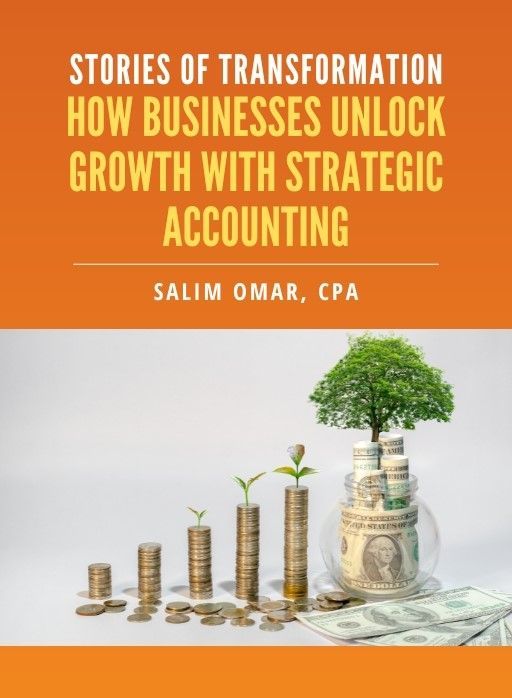Delegating for Results: The Hidden ROI of Outsourcing Financial Services in Year-End Crunch
There’s a quiet killer of Q4 growth inside most businesses—and it isn’t market conditions, product issues, or a thinning pipeline. It’s something less obvious but far more draining — teams stretched across too many priorities, racing toward too many deadlines, with no room left to actually think ahead.
As invoices stack up, inboxes explode, and cash-flow pressures creep in, even capable operators end up playing defense. Decisions slow down. Reporting gets sloppy. Strategic projects sit untouched. Meanwhile, the window for high-impact year-end moves starts to close.
Here’s what the fastest-growing CEOs know: Q4 growth is less about pushing people harder—and more about protecting them from operational quicksand. That’s why top performers outsource financial tasks like AP/AR,
bookkeeping,
payroll, and
CFO-level planning. They deploy external expertise to buy back internal bandwidth—turning year-end chaos into a tightly controlled, profitable push into the next quarter.
Buy Back Focus, Not Just Time
When AP/AR, payroll queries, and reconciliations eat hours every week, leaders get reactive instead of forward-focused. Delegating financial services isn’t just avoiding low-value work—it’s reclaiming headspace.
- What to expect: Free up roughly 8–15 hours/week of leadership and senior-operator time by shifting AP/AR, payroll queries, and reconciliation prep.
- Outcome: A precision-run external finance team removes day-to-day noise so internal operators can focus on deals, delivery, and decisions that actually move revenue.
- Q4 edge:
Put brainpower on growth moves—not inbox firefighting.
Reduce Burnout, Preserve Performance
Ramping to hit end-of-year targets feels like sprinting a marathon. The hidden cost isn’t just overtime—it’s turnover.
- Stabilize workload spikes: By offloading bill pay, invoicing, and payroll oversight during the surge.
- Typical result: 20–30% fewer after-hours “spreadsheet emergencies” and more consistent output when performance matters most.
- Protect your people now = scale stronger next quarter.
Access Higher-Tier Strategic Guidance
Most companies don’t need a full-time CFO—but almost all need CFO-level thinking during crunch time.
Fractional financial leadership can:
- Sharpen cash projections with a rolling 13-week forecast.
- Pressure-test funding needs and plan Q4/Q1 scenarios before acting.
- Refine pricing, burn, and margin levers for immediate impact.
What changes fast:
A weekly CFO cadence (cash review + scenarios) can move cash visibility from monthly to weekly within 2 weeks—so decisions reflect actual runway, not gut feel.
Create Elasticity in Your Cost Structure
Internal hiring is fixed. Outsourcing is dial-up/dial-down—perfect for the seasonal surge.
- Shift tasks like AP/AR management, expense tracking, and financial reporting cadences to a trusted external team.
- Convert fixed salary overhead into on-demand support; scale up when year-end fires heat up, scale back once the dust settles.
- The play is agility: respond to Q4 volume without locking into long-term commitments.
Cut Costly Year-End Errors Before They Happen
When things get hectic at year-end, it’s easy for receipts to go missing, numbers to get dumped in the wrong place, and the close to get rushed — all of which can quietly cost you thousands in tax or audit pain later on.
- Bringing in an external finance team: It adds structure, backup, and proven systems — the kind of safeguards most businesses don’t have time to build internally.
- Immediate upside: Cleaner books heading into filing, fewer surprise penalties, and more profit kept where it belongs.
- Expectation-setting: Close checklists and variance reviews reduce late adjustments and classification errors by roughly 25–40% going into filing season.
What to Outsource vs. Keep In-House (Guardrails)
Outsource first (high leverage, low risk)
- AP/AR execution and cadence management (client retains approvals)
- Payroll administration support (not final approvals or bank access)
- Monthly close prep, reconciliations, and reporting packs
- Budget-vs-actual variance analysis and cash-flow modeling
- Rolling 13-week cash forecast and weekly cash dashboard
Keep in-house or tightly governed (control-critical)
- Bank access controls and vendor approval policies
- Revenue recognition policies and significant accounting judgments
- Final sign-offs on payments, payroll, and journal entries
- Sensitive compensation data, equity, and access to payroll/bank portals.
Bottom Line
Delegating financial services isn’t just another line item — it’s a strategic investment with exponential upside, especially in the quarter where every decision has ripple effects across your cash, taxes, and trajectory. By outsourcing wisely, you don’t just save hours — you create leverage.
Reclaim capacity so your internal team operates at their highest value. Get sharper decisions by leaning on outside expertise you don’t need to hire full-time — and shield your team from Q4 burnout so they hit January fired up, not running on fumes.
Get this right, and you won’t just survive the year-end rush — you’ll build momentum that compounds long after the calendar flips. Because scaling with expert-grade finance in your corner, not just on your payroll, is how growth-obsessed CEOs create separation — right when the competition starts to stall.
Want to explore what handing off your finance ops could save you this Q4?
Straight Talk CPAs builds fractional finance teams that help growth-obsessed CEOs hit targets without torching their staff… or their sanity.
Free eBook:
Stories of Transformation


Salim is a straight-talking CPA with 30+ years of entrepreneurial and accounting experience. His professional background includes experience as a former Chief Financial Officer and, for the last twenty-five years, as a serial 7-Figure entrepreneur.





